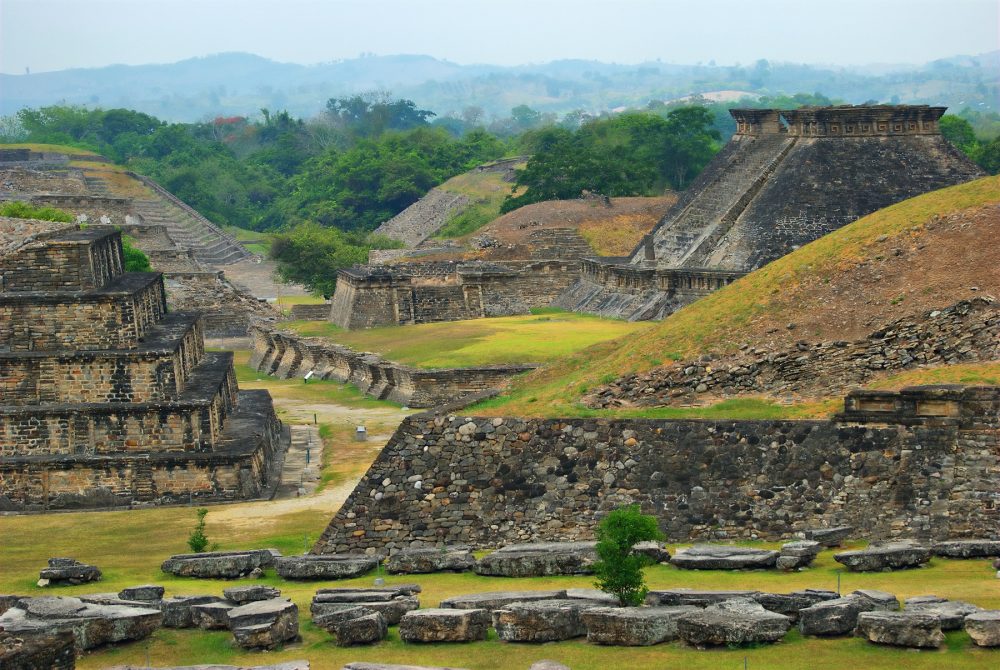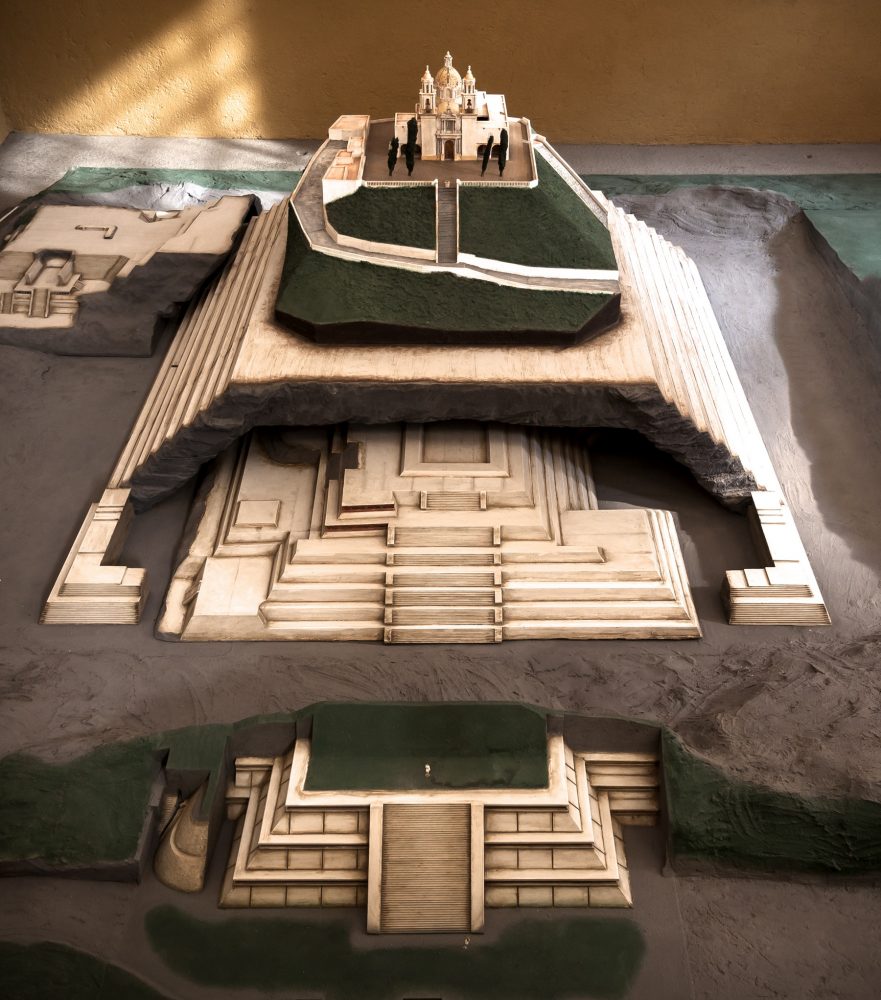There are more than 2,000 pyramids in America alone.
Although Egypt is known for its glorious Giza pyramids, as it turns out, the African country isn’t home to the most pyramids on Earth. In fact, to the south, in present-day Sudan, an ancient civilization built more than 200 pyramids. Halfway around the world in the American Continent, various ancient civilizations arose, many of which built striking pyramids. In fact, it is in North America where we find the largest pyramid on Earth, the Great Pyramid of Cholula. This massive structure was built with a total volume of 4.45 million cubic meters, which means it is even larger than the Great Pyramid of Giza in Egypt, which has a total volume of around 2.5 million cubic meters.
Even though it is difficult to count all pyramids, North America has more than one thousand pyramids alone. Central America has many more excellent examples of ancient pyramids, and South America has some of the oldest. The Brazilian pyramids are considered the oldest on Earth and were built around 5,000 years ago. Archeologists say that there were around 1,000 pyramids in Brazil alone. However, unlike their Egyptian counterparts, the Brazilian pyramids were built exclusively out of seashells, which is one of the main reasons why many of their pyramids were destroyed since people in the 19th and 20th centuries confused them for piles of rubble. Many were destroyed to make a place for livestock farms, and others were crushed to make room for roads or settlements.
If we were to count the pyramids of America roughly, we would probably come across more than 2,000 structures alone. In comparison, Africa has around 350 pyramids, counting mostly those pyramids in Sudan and Egypt. There are also pyramids in Nigeria, but most of these structures have been destroyed. (The Nigerian pyramids were built out of hardened mud and clay.)
The birth of the ancient pyramid
Pyramids were developed independently by civilizations across the globe. If we are to look at the mainstream chronology of ancient Egypt, we will find that the first pyramid appeared around 4,700 years ago when the Third Dynasty Pharaoh Djoser commissioned the construction of the Step Pyramid at Saqqara. This revolutionary monument is regarded as Egypt’s earliest colossal stone building and the earliest large-scale cut stone construction, although the pyramids of Caral in South America are contemporary. Curiously, the Brazilian pyramids predate the Egyptian pyramids by around 300 years. This means that pyramids appeared worldwide in America, Africa, and possibly Asia no more than a few hundred years apart. As far as mainstream chronology goes, pyramids, as we define them today, appeared 5,000 years ago in the American Continent and around 4,700 years ago in Africa. This means that pyramids appeared in “the blink of an eye” and entirely suddenly in a historical context.
The evolution of a pyramid
This doesn’t mean that some pyramids aren’t developments of earlier structures. According to Egyptologists, the Egyptian pyramids draw several ideas from previous structures known as mastabas. Egyptologists believe that the Step Pyramid of Djoser is the result of the evolution of the mastaba tomb, and the idea was introduced by Djoser’s royal architect Imhotep. The Step Pyramid was then further developed by Sneferu’s architects until the first smooth-sided pyramid was constructed during the Fourth Dynasty. This was the Red Pyramid at Dahshur, which directly influenced the construction of Egypt’s Greatest Pyramid, the Pyramid of Khufu.
America’s pyramids are different
However, in the American continent, things are different. We aren’t entirely sure why the ancient civilizations in Brazil saw the need to create massive pyramid mounds using seashells and whether this idea was developed independently or whether it draws precedents from other structures. Like those found in present-day Mexico, the North American pyramids are believed to be temples that were essentially Step Pyramids. The pyramids created by civilizations such as the Olmec, Maya, or Aztecs are massive superimposed structures where the builders would stack one temple atop the other, essentially creating a pyramid similar to that of Djoser.
And precisely in Mexico is where we find striking examples of pyramids. Not only is Mexico home to the largest pyramid on Earth, but it is also home to a great variety of ancient pyramids, many of which date back thousands of years. In this article, I’d like to introduce you to three ancient pyramids you probably do not know of.
Ancient wonders
I’ve picked these three pyramids because, in one way or the other, they are unique. El Tajin. There’s a pyramid city in present-day Mexico called El Tajin. It is home to various step pyramids built in ancient times, but one pyramid stands out from the rest. It’s called the Pyramid of Niches, and it is one of the most unique pyramids in all of Mesoamerica. Not because of its size but because of its unique design and message.

El Tajin, Comalcalco and Cholula
The Pyramid of niches at El Tajin was completed around the 8th century CE, and it features 365 symmetrically positioned square niches—each of which is 60 centimeters deep. These niches are a message embedded in stone. The archeological survey of the pyramid has revealed that the ancient structure may have been built in ancient times to illustrate the solar calendar. As revealed by Pyramidomania, this architectural feature suggests a deep connection between the pyramid and the solar year.
Another striking example of unique pyramids in North America is the pyramid of Comalcalco. As far as we know, all pyramids created by the ancient Maya were built out of limestone. However, this ancient structure was not.
Located in Tabasco, not far from the city of Villahermosa, the Pyramid of Comalcalco is unique because it was built out of fired brick. Archeological surveys of the site have revealed that the fired bricks used in the pyramid’s construction bear strange symbols left behind by its builders. According to researchers, these symbols are “eerily similar” to ancient roman symbols. Furthermore, it has been argued that the fired bricks used to construct the pyramid of Comalcalco resemble construction techniques employed by the ancient Romans halfway around the world.
Of the three pyramids in this article, Cholula is perhaps the best known. That’s because this ancient pyramid, hidden beneath a hill, is a truly gigantic structure. As revealed by the Guinness Book of World Records, the Great Pyramid at Cholula is the largest pyramid and ancient monument ever constructed anywhere on Earth.

The most massive pyramid
With a total volume of 4.45 million cubic meters, it is nearly twice as large as the Great Pyramid of Giza, which has an estimated 2.5 million cubic meters. The city where this pyramid was built was one of the most important in pre-Columbian times. Historians estimate that more than 100,000 people lived there before the arrival of the Spanish Conquistadores. The pyramid was hidden on purpose before the arrival of the Spanish.
One story tells how the people of Cholula were afraid that the Conquistadors would destroy their ancient temple, so they made a behemoth effort to hide the pyramid. Their plan apparently succeeded, and the Spanish never noticed the pyramid existed. In fact, they built a church atop the pyramid that still stands. Other accounts suggest that the Spanish explorers were indeed familiar with the existence of the pyramid, and some writings by the Spanish indicate they had come to know the pyramid. Whatever the case, Cholula is a stunning ancient site.
Have something to add? Visit Curiosmos on Facebook. Join the discussion in our mobile Telegram group. Also, follow us on Google News


